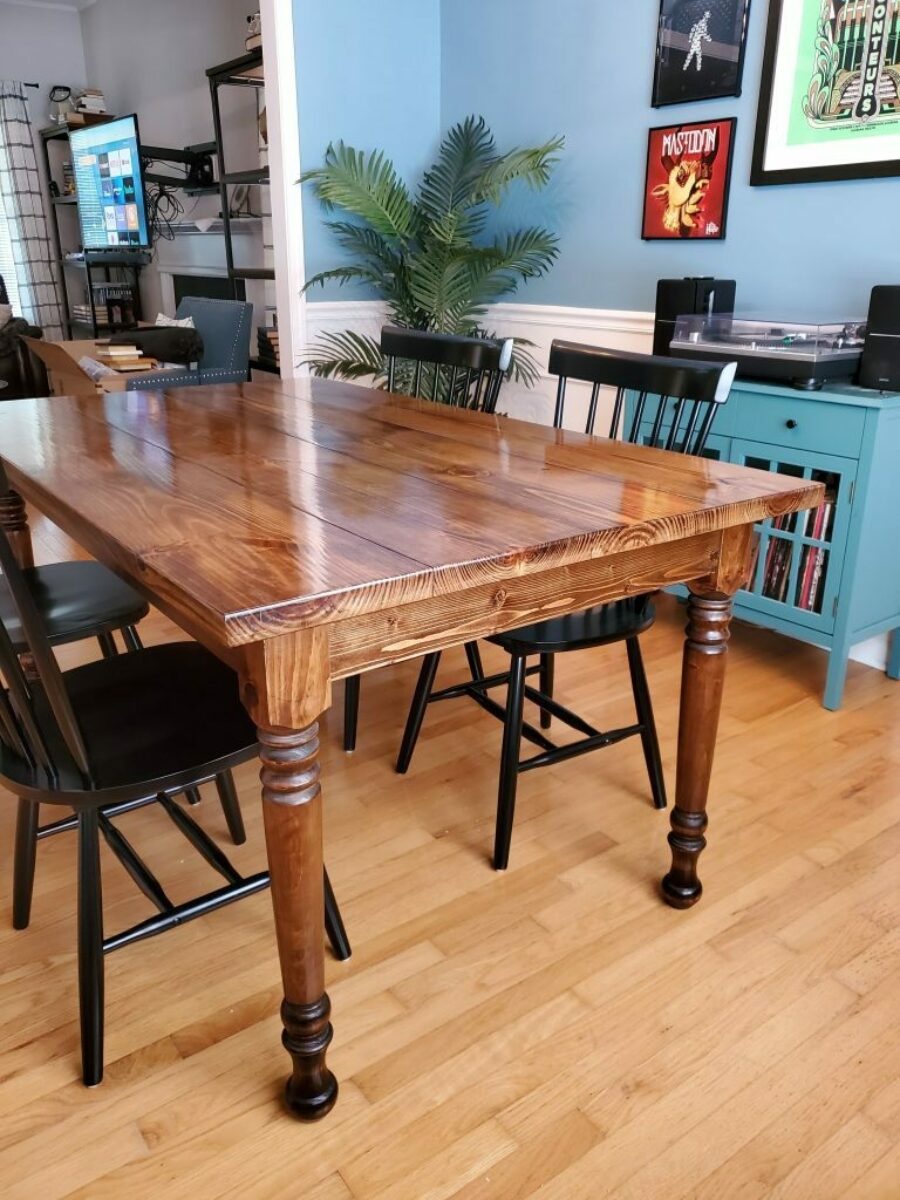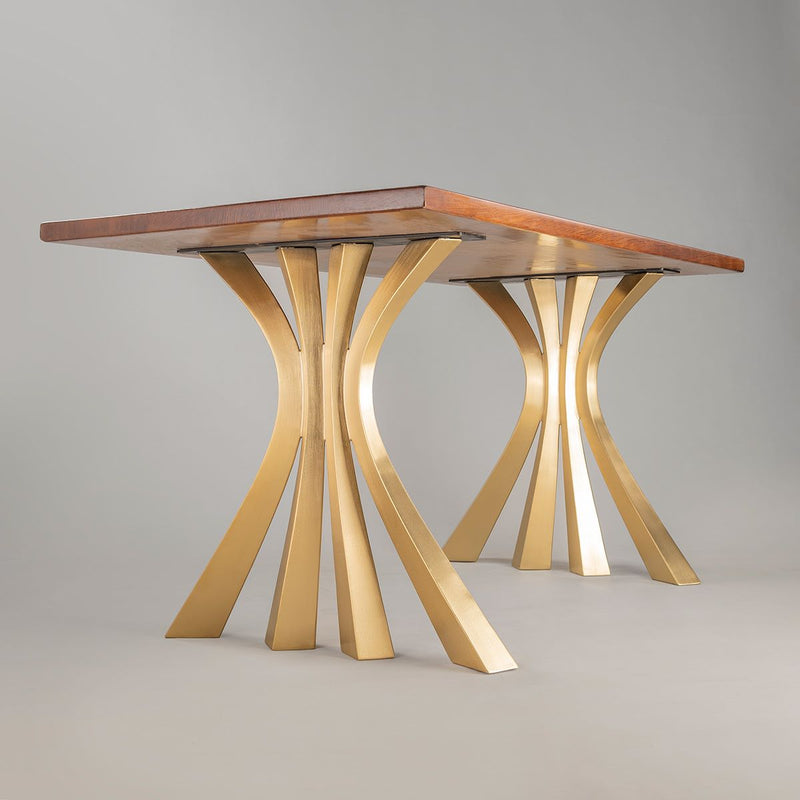Distinct Dining Room Table Legs to Transform Your Dining Location
Distinct Dining Room Table Legs to Transform Your Dining Location
Blog Article
Choosing the Perfect Table: What Styles Job Best for Your Home?
Picking the suitable eating table for your home can be a nuanced process that stabilizes visual appeals and capability. To navigate these options successfully and find a table that absolutely complements your home, think about the following facets in detail.
Examining Your Area
Examining the dimensions and design of your eating location is an essential very first action in selecting the perfect table. Begin by determining the size and size of the room, representing entrances, windows, and various other building functions that might influence table positioning. This ensures that your table not only fits however additionally permits comfy movement around it.
Consider the number of people you commonly amuse. A table needs to accommodate your home's daily requirements while offering enough adaptability for periodic visitors. Generally of thumb, designate at the very least 24 inches of table size per person to make certain a comfy dining experience.
It's also essential to keep proper clearance around the table. Preferably, there ought to go to the very least 36 inches between the table edge and walls or various other furnishings, enabling easy accessibility and activity. For spaces where chairs with arms or extra storage space units like buffets are included, raising this clearance to 48 inches is suggested.
Illumination and ambience play considerable functions too. Make certain that your dining table aligns with existing lighting components or prepare for ample lighting options. This detailed spatial assessment guarantees that your eating table not only fits literally yet additionally harmonizes with your area's overall performance and visual.
Popular Table Styles

Typical dining tables typically feature ornate information, bent legs, and rich timber finishes, stimulating a sense of timeless style. They are best for homes with timeless style or those seeking to add a touch of refinement to their eating area.
Modern dining tables prioritize simpleness and tidy lines, usually incorporating materials like glass and steel. These tables are suitable for modern spaces, giving a smooth and minimalist appearance that complements minimalist layout viewpoints.
Rustic eating tables, on the various other hand, highlight natural materials and a handmade look - dining room table legs. They usually include reclaimed timber and a troubled coating, creating a cozy and welcoming environment. These tables work well in farmhouse-style homes or those looking for a cozy, organic feeling
Industrial eating tables incorporate basic materials such as steel and wood, often showcasing an utilitarian visual. This style is appropriate for lofts or city spaces, including a touch of rugged appeal important source and toughness to the dining experience.
Each style uses distinct benefits, making it vital to pick one that aligns with your home's general layout and your personal choices.
Material Selections
When selecting an eating table, the option of product plays a critical duty in determining both the table's aesthetics and capability. Wood, steel, glass, and composite products each offer distinct advantages and obstacles, making it crucial to align the material with your home's style and lifestyle requirements.
Timber is a classic and versatile option, offered in selections such as oak, walnut, and mahogany. Recognized for its durability and warmth, wood complements both typical and contemporary insides. Nevertheless, it needs routine upkeep to prevent scrapes and warping.
Steel tables, commonly crafted from stainless steel, aluminum, or wrought iron, are applauded for their contemporary appeal and effectiveness. They are especially suited for industrial or minimalist settings but can be vulnerable to damages and might feel cool to the touch.
Glass dining tables bring an air of style and openness, perfect for smaller rooms as they produce an impression of even more area. While easy to clean, glass can be prone to smudges and requires careful dealing with to prevent chips and cracks.
Composite materials, such as MDF and plywood, deal cost-effective and customizable solutions, though they might do not have the durability of natural materials. Picking the appropriate product ensures your table is both a functional property and an aesthetic pleasure.
Sizes And Shape Factors To Consider
After identifying the suitable material for your eating table, the advice next consideration is picking the ideal sizes and shape to fit your room. The form of the table considerably influences the area's aesthetic and functionality. Rectangle-shaped tables, the most usual shape, are perfect for larger rooms and can accommodate a greater number of visitors. They likewise permit an extra formal dining experience. On the other hand, rounded tables cultivate a feeling of intimacy and are excellent for smaller sized dining locations, urging conversation by removing corners and making every person feel just as included.
As a policy of thumb, designate at the very least 24 inches of table size per person to guarantee comfortable dining. Additionally, take into consideration the table's clearance area: there must be at least 36 inches between the table edge and the walls or various other furnishings. Expanding tables use adaptability if you regularly organize bigger events, offering additional seats when required without inhabiting added room daily.
Matching Your Style
Picking a dining table that harmonizes with your existing design is critical in producing a cohesive and welcoming space. Begin by assessing your current interior decoration style, whether it be modern, traditional, rustic, or diverse. The dining table should complement the total visual, not take on it. As an example, a streamlined, minimalist table with tidy lines is suitable for a contemporary home, while a vintage, luxuriant table fits an extra conventional setup.
If your decor features warm tones and natural materials, consider a wooden table to enhance the organic feel. On the other hand, a glass or metal table may be a lot more ideal in a room controlled by trendy shades and commercial components.
A rough-hewn, redeemed timber table can add personality to a rustic area, best site while a refined marble surface can boost a lavish dining location. A well-matched eating table not only boosts aesthetic appeal however additionally enhances the overall eating experience.

Conclusion
Choosing the ideal table requires cautious factor to consider of room, style, materials, form, and dimension (dining room table legs). Typical tables enhance classic interiors with rich wood surfaces, while contemporary tables fit contemporary settings with glass and metal. Rustic designs introduce warmth via natural products, and commercial designs enhance city environments with raw elements. Harmonizing the dining table with existing design makes sure both capability and aesthetic allure, adding to a natural and aesthetically pleasing eating area.
Report this page